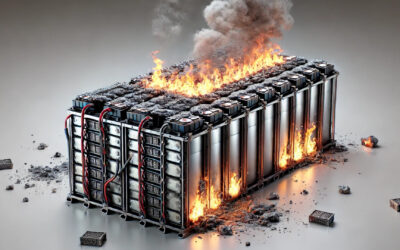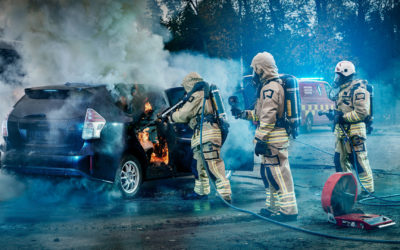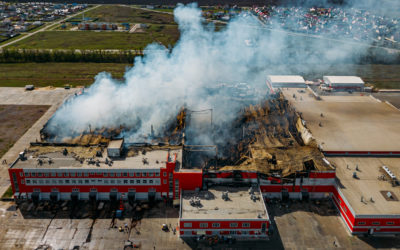Deep-seated fires, wildfires, can last for a long time, they are difficult to see and easily cause damage to the ecology of sensitive environmental areas, both during fire and during extinction. In forest environments, these fires can be particularly devastating.
Definition Deep-Seated Fire
- A fire burning far below the surface in duff, mulch, peat, or other combustibles as contrasted with a surface fire.
- A fire that has gained headway and built-up heat in a structure so as to require greater cooling for extinguishment.
National Wildfire Coordination Group, US
Impact of Wildfires
An event of wildfire quickly escalates to become a major problem for the area involved. Since a wildfire can result in a deep-seated fire, it is of importance to stop the progress of the fire as fast as possible – deep-seated fires emit large quantities of carbon and require significant resources from fire and rescue services.
Using Cobra for Deep-Seated Fires
High-pressure water can be used to penetrate peat layers and reach the seat of the fire – hence, a successful attack can be done using Cobra.
By locating the hot areas using a thermal imaging camera, a targeted intervention can be made with Cobra, which according to research (Land 2015; Spjuth 2020), can pierce layers of peat to a depth of over two metres.
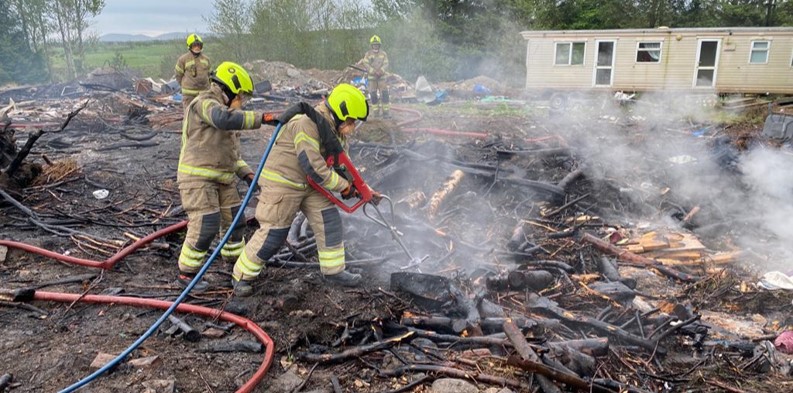
Cobra pierces through the soil using water and abrasive, a cutting agent made of Olivine – a naturally occurring product extracted from mineral mining. When Cobra pierces a material, there is normally an open space on the other side of the pierced material, which allows the water jet to open into a finely dispersed water mist. In this case, deep-seated fire, the water jet will instead stay relatively closed.
As the extinction is done in one continuous motion, no extra air is added to the fire, resulting in a suppressed or completely extinguished fire. Firefighting crews avoids having to make large excavations to reach each hot spot. Instead, the feedback from the thermal imaging camera confirms the extinguishing and shows where the next hot spot is located.
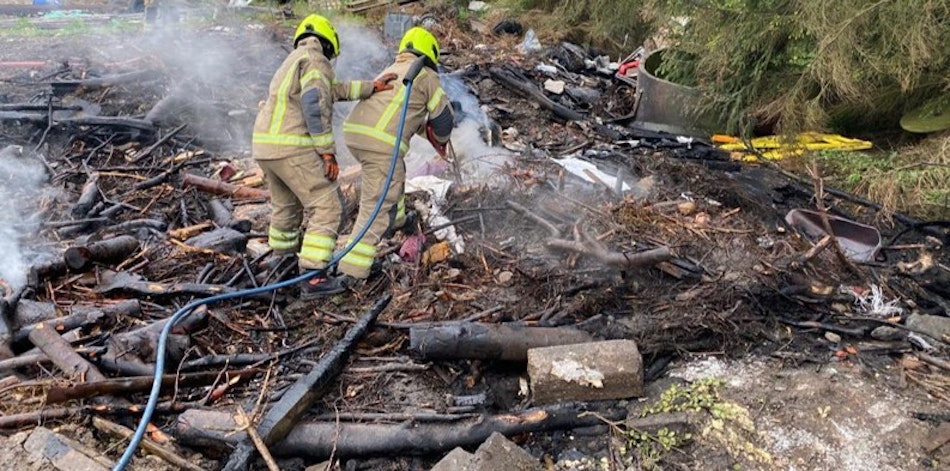
Flexible and Efficient
Cobra can be used at any angle, which in practice means that deep-seated fires easily can be reached. Cobra also provides quick and easy access, it is lightweight and easy to move. Only 60 litres of water per minute is used, and with a pressure of 300 bar and a water flow of 200 m/s, it allows access to deep-seated fires.
Coordination, knowledge, and training
Communication is vital. The Cobra operator may be unable to see what effect Cobra is having on the fire, so good communication between the crew, Cobra operator and Incident Commander must be achieved and maintained to get the Cobra lance into the best position.
With knowledge and training, fire and rescue services can control the fire and reduce the risk of fire spreading.
Cobra Benefits
Quick intervention.
The equipment is light in weight and easy to handle, which enables rapid deployment. The training programme that underpins Cobra gives fire crews the ability and confidence to deploy Cobra very quickly on arrival.
Less water…
Traditional firefighting methods when fighting deep-seated fires use a considerable amount of water – 450 litres per minute or more. Cobra uses 60 litres of water per minute, considerably less than traditional firefighting methods, and valuable since water as a resource can be hard to administer in typical wildfire areas.
… but more efficient.
As Cobra only uses 60 litres of water per minute, an 1800 litre tank of water will last for 30 minutes, if Cobra is used continuously. This gives valuable time to secure additional water supply where needed – which is very important in areas where water supplies are scarce.
Reduces environmental impact from the fire.
The rapid fire suppression associated with Cobra means that less toxic emissions get into the atmosphere. Targeted interventions mean less water used – reduced water consumption means less contaminated water run-off.
Benefits of Cobra use
- Quick and easy intervention
- Less water needed
- Can pierce to a depth of over 2 meters
- Locate and attack hot spots directly using a thermal imaging camera and Cobra
- Cobra can be used at any angle
- Less toxic emissions and contaminated water run-off
Source: Land, Simon. 2015. Study on the use of ultra high pressure fogging systems to apply water to deep seated peat fires. Primetech (UK) Ltd. [2022-04-19]
Source: National Wildfire Coordination Group. [2022-04-12]
Source: Spjuth, Martin. 2020. En jämförelse av skärsläckare och dimspik för bekämpning av torvbränder. Luleå Tekniska Universitet.
